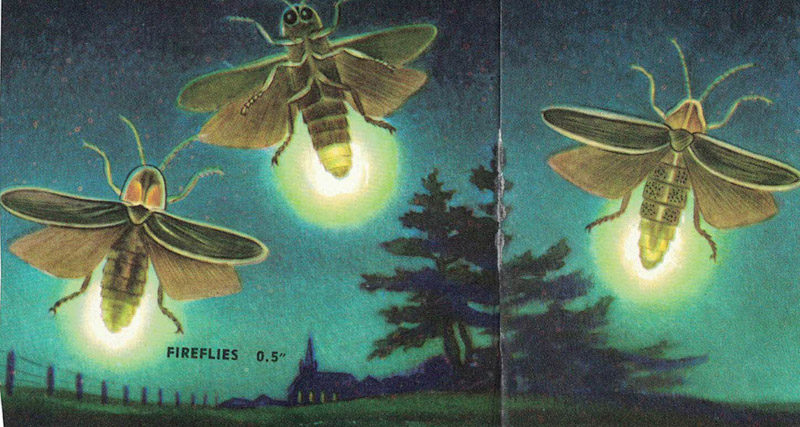
Fireflies are not flies at all but softbodied beetles. This illustration by James Gordon Irving is from “Insects, A Guide to Familiar American Insects” by Herbert S. Zim and Clarence Cotton.
The relativity few insects that produce light have long attracted attention. Fireflies, also known as lightning bugs are common in this country. About 50 species are known here and they are widely distributed in the tropics. They are not a fly or a bug, but a soft-bodied beetle and in the families of Lampyridae and Cantharidae.
I found this all out by looking in my Larousse Encylopedia of Animal Life and my Guide to Familar American Insects.
I was not interested in the details when I first encountered these night flying bodies. My sister, Margaret, and I, like most young people of Lincoln County were well aware of these unusual lighted moving beetles. We would go out in the evening, in the spring and early summer, watch them and catch them for the excitement of it. As I remember, they would not flash when we held them in our hands but if we put them in a glass jar, they would perform to our satisfaction.
I have not thought much about them for years, but back in June I would notice, outside my bedroom window, fireflies and lightning bugs making constant lightings, even though my room was on the second floor. I got interested and looked them up.
Depending on the species, their light varies from a feeble glow to spectacular displays by thousands of males, all flashing in unison night after night for weeks on end. Also common is the European glow-worm (Phengodidae). The females’ sixth and seventh abdominal segments bear luminous organs which attract the winged male.
In the American Firefly, both sexes fly and flash regularly. The female responds to the male flash and thus encourages him to find her. They certainly have been active this spring. The light-giving property, or luminescence, is not confined to the adults. In some species the eggs and larvae glow also.
The light emitted by the various fireflies and glow-worms may be bluish, greenish, yellow, orange, and red. It may be produced by larva or adults, and the luminous organisms vary in number, position, and complexity.
Light is produced when an organic substance, luciferin, is oxidized within the photogenic cells with the aid of an enzyme, luciferase. About 90 percent of the energy radiated by the organ of a firefly takes the form of visible light, compared with a mere five per cent for an electric light bulb.
Fireflies and lightning bugs are of little economic importance but when we see them flashing, they make us stop and watch them. They are common in the spring and summer. Larvae live in the ground, under bark and in moist swampy places. They feed on various invertebrates, including snails.
Scientists have not yet learned the secret of their “cold light” which could be of practical use.






